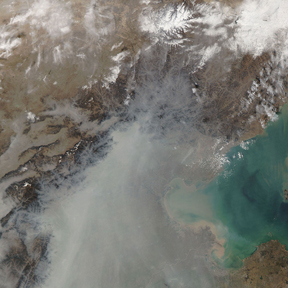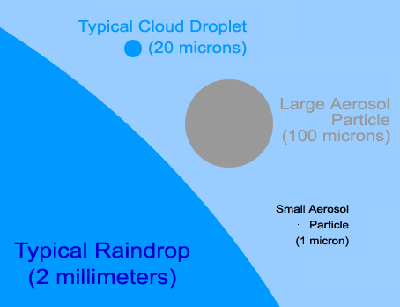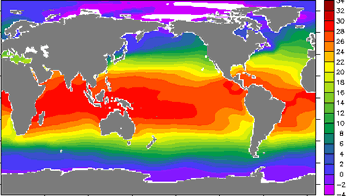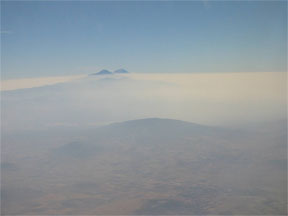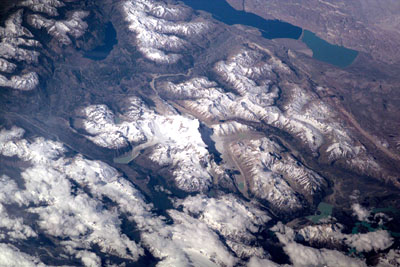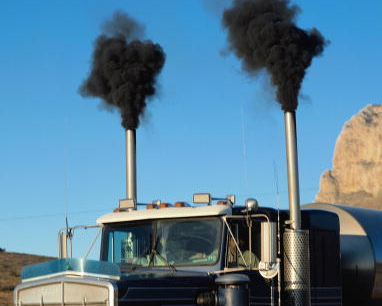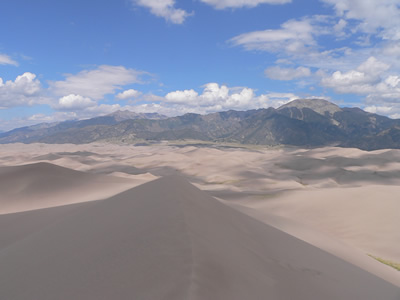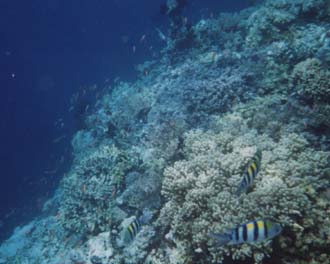Click on image for full size
NASA image courtesy the MODIS Rapid Response Team
Aerosols and Climate Change
Little particles in the atmosphere called aerosols may be small but they have the ability to change climate. These tiny particles are a natural part of the atmosphere, coming from erupting volcanoes, sea salt, and wildfires. However, since the start of the Industrial Revolution additional aerosols have been added to the atmosphere as fossil fuels are burned. This air pollution is having an impact on Earth's climate. These effects are complex, however, because different types of aerosols affect climate in different ways.
The amount and type of aerosols in the atmosphere has an impact on the albedo of our planet - the amount of solar energy that is reflected back out to space. Different types of aerosols have different effects on albedo. Aerosols like sea salt have a high albedo so they reflect solar radiation back out into space. Aerosols like black carbon have a low albedo and reflect very little solar energy.
Aerosols help clouds form and clouds have an impact on climate. The millions of little droplets of water that make up a cloud each need a little particle, like an aerosol, to condense upon. When more aerosols are released into the atmosphere, either from a natural event like a volcanic eruption or from burning of fossil fuels, the types and numbers of clouds that appear in the sky can change. The number and type of clouds overhead affects the amount of solar energy that makes its way to the Earth surface and the strength of the greenhouse effect. The amount of precipitation that falls in the region is affected too.
Also, climate is affected when the additional aerosols change chemical reactions that are going on in the atmosphere. Some reactions cause the little aerosols to grow larger, increasing their ability to either reflect sunlight away or absorb it. Scientists are actively studying how chemical reactions in the atmosphere are affected by aerosols.
Scientists think that over most of the last century the overall effect of the added aerosols was to reduce the amount of global warming. Today, however, as new technologies have allowed factories, power plants, and automobiles to release less air pollution into the atmosphere, the amount of aerosols has dropped. That's a good thing since air pollution is a problem for human health. But it has also stopped dampening the global warming which means the pace of warming is likely to increase.


